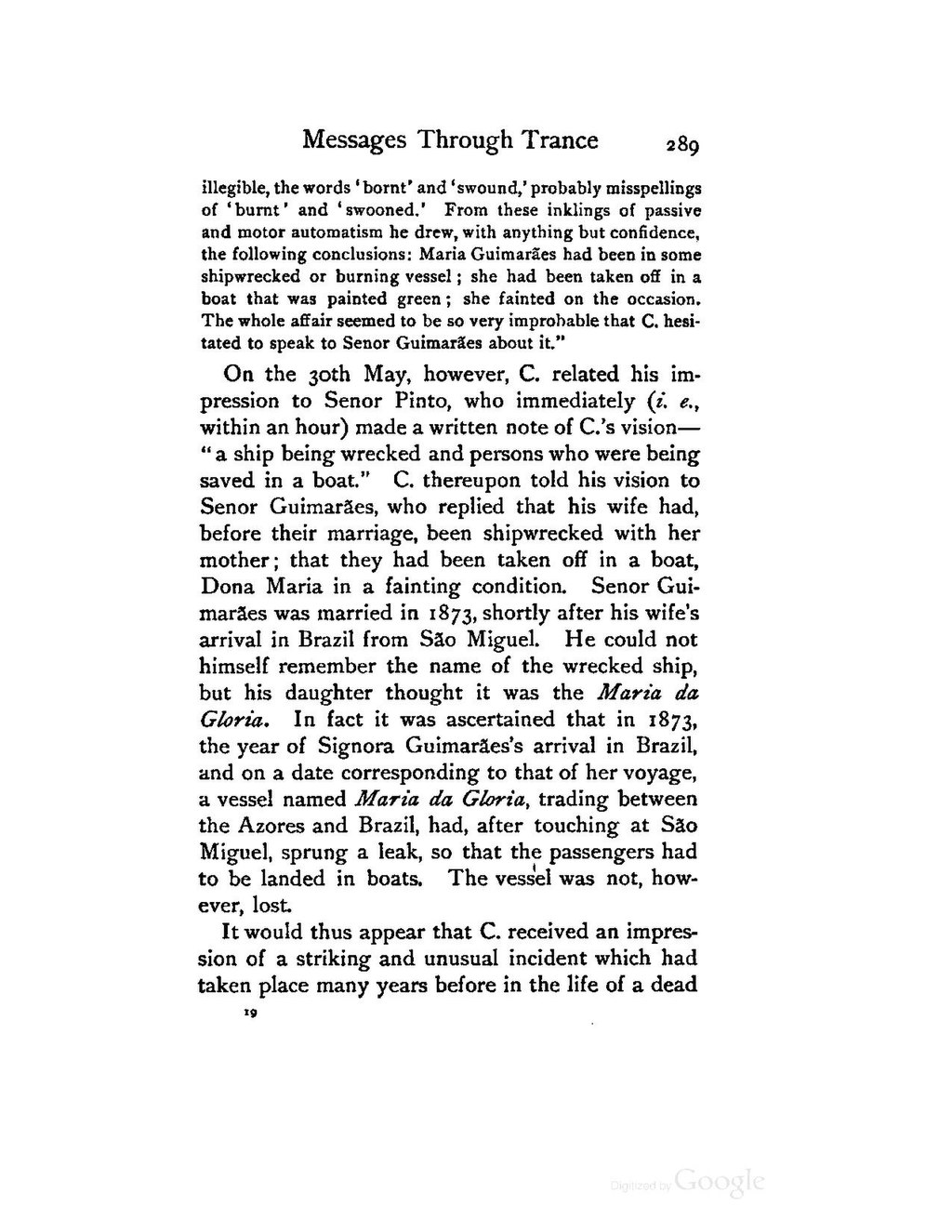illegible, the words 'bornt' and 'swound,' probably misspellings of 'burnt' and 'swooned.' From these inklings of passive and motor automatism he drew, with anything but confidence, the following conclusions: Maria Guimarães had been in some shipwrecked or burning vessel; she had been taken off in a boat that was painted green; she fainted on the occasion. The whole affair seemed to be so very improbable that C. hesitated to speak to Senor Guimãries about it."
On the 30th May, however, C. related his impression to Senor Pinto, who immediately (i. e., within an hour) made a written note of C.'s vision—"a ship being wrecked and persons who were being saved in a boat." C. thereupon told his vision to Senor Guimarães, who replied that his wife had, before their marriage, been shipwrecked with her mother; that they had been taken off in a boat, Dona Maria in a fainting condition. Senor Guimarães was married in 1873, shortly after his wife's arrival in Brazil from São Miguel. He could not himself remember the name of the wrecked ship, but his daughter thought it was the Maria da Gloria. In fact it was ascertained that in 1873, the year of Signora Guimarães's arrival in Brazil, and on a date corresponding to that of her voyage, a vessel named Maria da Gloria, trading between the Azores and Brazil, had, after touching at São Miguel, sprung a leak, so that the passengers had to be landed in boats. The vessel was not, however, lost.
It would thus appear that C. received an impression of a striking and unusual incident which had taken place many years before in the life of a dead

